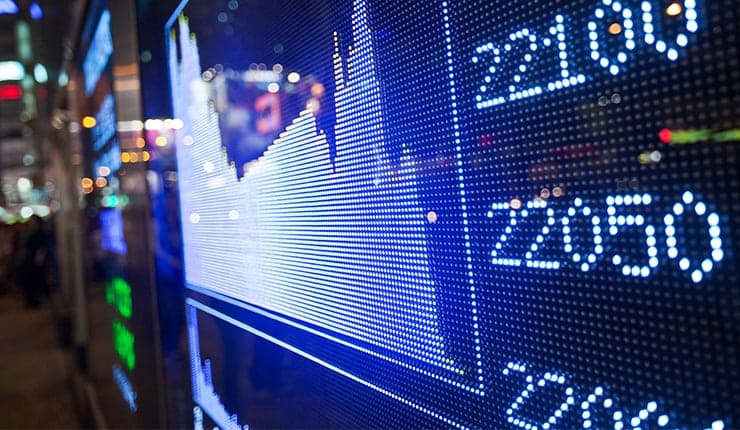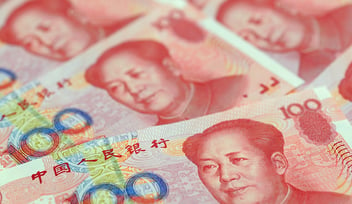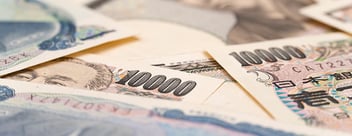You are perhaps familiar with the terms “floating exchange rate regime” and “fixed exchange rate regime”, but do you understand the major differences that set them apart? In this piece, we explain the factors distinguishing each model, both of which bear a considerable influence on the question of managing currencies on the currency market.
An exchange rate regime is generally defined as the way in which a country, or several countries, determine the exchange rate of their currency in relation to others. Though it was previously widespread, the currencies of most developed countries are no longer governed by a fixed exchange rate system. The floating exchange rate regime, also known as the flexible exchange rate regime, is the most prevalent exchange rate regime today. There are two main types of exchange rate regime.
Floating (or flexible) exchange rate regime
Here, there is no specific exchange rate target. The currency rate fluctuates freely in accordance with supply and demand on the foreign exchange market.
Fixed (or pegged) exchange rate regime
The currency rate is set to a particular standard (typically another currency or a basket of currencies). The currency rate is, however, allowed to fluctuate within a narrow range of this benchmark or standard.
The monetary authorities of a particular country or currency area typically adopt and operate under an exchange rate regime that aligns with their own objectives and their international positioning. While the floating (or flexible) exchange rate system is now widespread, some models, such as that of China, have specific characteristics that influence international exchange rates. Let’s take a look at the specific features of the main exchange rate regimes.
Intermediate exchange rate regime
Intermediate exchange rates regimes are, as their name suggests, half-way between fixed and floating exchange rate regimes. According to this regime, there is a tiny variation around the fixed exchange rate. These exchange rate regimes include crawling pegs, which are fixed exchange rate regimes that allow gradual appreciation and depreciation within a band of rates.
As part of the creation of the European Union, the European Monetary System was created as the first step towards uniting the exchange rates of the future Eurozone countries. The multilateral adjustable exchange rate agreement required the Eurozone countries to link their currencies together in order to prevent large fluctuations in value before the rates were eventually fixed against a new currency: the euro. In the same vein countries in Asia are also seeking solutions to promote financial stability in the region and have established the Chiang Mai Initiative that aims to unite the economies of ASEAN currencies and China, South Korea and Japan around an intermediate exchange rate regime.
What is a floating (or flexible) exchange rate regime?
Given the repeated economic crises of the 1970s, strict exchange rate conditions no longer made sense for most developed economies. The existing fixed exchange rate regime was no longer consistent with the realities of an increasingly volatile global economy. Under such circumstances, the floating (or flexible) exchange rate regime became widespread.
A floating (or flexible) exchange rate regime is governed by supply and demand on the foreign exchange market. The main global currencies (commonly referred to as the G7 currencies, are based on this model. The exchange rates of the US dollar (USD), the euro (EUR) and the Japanese yen (JPY), for example, fluctuate freely in accordance with market movements.
In the floating rate’s “purest” form, the respective value of different currencies is entirely dependent on market fluctuations. But there are also somewhat distinct floating regimes, such as the “managed float regime” adopted by China.
Managed floating exchange rate regime
According to this system, the central bank regularly intervenes by communicating its desired exchange rate to specialised foreign exchange market operators. These subsequently take the necessary steps to achieve this rate. This model operates by regulating market developments with the goal of maintaining the currency rate at a specific target value.
It should be noted that even in the purest floating exchange rate regimes, central banks tend to intervene occasionally, especially in times of crisis, to avoid the undervaluation or overvaluation of the local currency and to address the economic issues caused by such developments.
|
Did you know? China’s managed exchange rate regime has been a subject of controversy for a number of years. For some competing countries and currency areas, the interventionist monetary policy adopted by the People’s Bank of China – China’s central bank – is considered unfair, as it allegedly maintains the yuan (CNY) at an undervalued rate, therefore favouring Chinese exports. |
What is a fixed exchange rate regime?
Fixed exchange rate regimes were very common in developed countries between the 1940s and the 1970s. According to this model, the currency rate is pegged to a standard (a currency or a basket of currencies) and this is managed by the issuing central bank.
The central rate, or central parity, is also referred to as the “reference” exchange rate. A certain fluctuation band is allowed around this. In a fixed exchange rate regime, the central bank must maintain a currency rate around that of the central parity. To do so, it buys or sells the currency as needed.
In order to buy and sell its currency, the relevant central bank simply needs to maintain a sufficient level of reserves.
|
Did you know? Following the Bretton Woods Agreement of 1944, many developed countries adopted a fixed exchange rate regime. The value of their currency was determined according to the price of gold or the US dollar, redeemable in gold at that time. The fluctuation band around the central rate was set at 1%. From 1971 onwards, when the United States pursued currency devaluation measures, the dollar’s convertibility into gold was no longer justifiable and the agreement’s principles no longer applied. In 1976, the Jamaica Agreement led to the establishment of a widespread floating exchange rate regime governed by supply and demand. |
What is the optimal exchange rate regime?
Nowadays, the floating (or flexible) exchange rate regime is by far the most common model and has been adopted by most developed countries. For many developed countries, it can be the optimal exchange rate regime. According to this model, the exchange rate fluctuates unhindered in accordance with supply and demand on the foreign exchange market. However, there are also managed float regimes of a more interventionist nature, such as that of China. The fixed exchange rate regime is highly regulated. The value of the relevant currency is maintained within a strict fluctuation band, which is usually the preferred exchange rate regime for smaller economies open to external trade and prone to experiencing hyper-inflation.
Understanding the exchange rate regime adopted by a particular country or currency area is crucial to understanding the foreign exchange market. A general understanding of the different models will enable you to better anticipate the probability of exchange rate fluctuations and assess the positioning of different territories and currencies.
Topics






